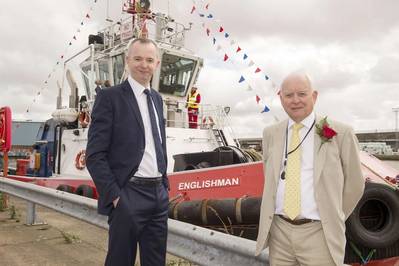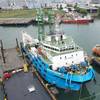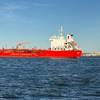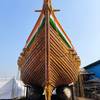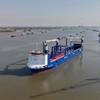Englishman: 11th Humber Tug Bears the Name
Humber tugboat operator SMS Towage has drawn on an old name for the latest addition to its fleet. The new Englishman is the 11th Humber tug to bear the title, in a tradition stretching back to the 19th century.
Built at the Sanmar yard on the edge of Istanbul to a Canadian design, she produces 3,500bhp and can bring in 270m long ships of more than 170,000 metric tons dead weight.
The 25m £3.5m vessel is capable of 13 knots and is among the most maneuverable on the estuary.
She is one of 13 owned by Hull-based SMS Towage, which has grown into the largest privately owned towing company in the UK. It has three tugs operating in the Bristol Channel from the South Wales ports of Cardiff, Newport and Barry and two in Belfast Harbour.
Three other boats in the Humber fleet, with the two in Northern Ireland, are sister boats to the new Englishman, which will be deployed in guiding bulk carriers, tankers and wind turbine supply vessels safely into and out of Hull and Immingham docks and riverside berths.
The previous Englishman now plies her trade with the Portland Port Authority in Dorset as the Rufus Castle.
SMS joint managing director Gareth Escreet said that the sale of that vessel had helped to fund the latest Englishman as part of the company's ongoing investment program.”Throughout our short history, we have continually strived to provide a competitive, efficient and customer-friendly service,” he said. The new addition to our fleet is another large investment for us and shows once again the strength of the Humber's economy."
In a traditional launch of the Englishman, Sue Lyon, wife of managing director Patrick Lyon, smashed a bottle of champagne against the bows and the Rev Canon Neal Barnes of Holy Trinity Church, Hull, gave the blessing.
SMS chairman Paul Escreet said, “The first vessel to bear the name Englishman was a steam tug built by Cook, Welton and Gemmell of Beverley in 1889, which ended her days in 1935 being operated by the Imperial Japanese Navy.”
Escreet added, “Another name holder was sunk by the Luftwaffe off the Irish coast during the Second World War.”



